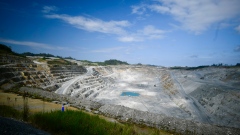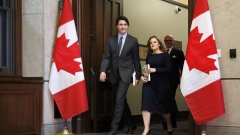Oct 31, 2023
Euro-Zone Inflation Sinks to 2-Year Low as Economy Contracts
, Bloomberg News
(Bloomberg) -- Euro-area inflation eased to its lowest level in more than two years as the bloc’s economy shrank following an unprecedented ramp-up in interest rates.
Consumer prices rose 2.9% in October — down from the previous month’s 4.3% and better than the 3.1% median estimate in a Bloomberg survey analysts. In a separate release, Eurostat said third-quarter gross domestic product fell 0.1% — missing estimates for stagnation.
Tuesday’s data show that while the European Central Bank’s 10 back-to-back rate hikes are helping to bring inflation back toward the 2% goal, they’re also taking a toll on households and firms by sending loan costs sharply higher.
In Germany, chemical giant BASF SE announced earlier in the day that it sees 2023 sales and earnings coming in at the lower end of its guidance, while shoppers at France’s Carrefour continue trading down to cheaper brands.
The GDP reading stands in stark contrast to the US, which last week reported bumper growth between July and September, while also managing to bring down inflation.
The euro stayed 0.4% higher against the dollar before the Federal Reserve’s policy decision on Wednesday, while German bonds held gains. Ten-year yields have fallen more than 10 basis points to 2.78% since last week, spurred by recent reports of softer economic growth and price gains from some of the euro area’s 20 members.
Europe’s biggest weak spot is also its largest economy, Germany, which revealed Monday that output shrank by 0.1% in the third quarter. GDP has barely risen for a year and a recession is now a real possibility.
Still, Italy just dodged such a fate, while France and Spain grew in the three months through September.
What Bloomberg Economics Says...
“The euro area is shrinking slightly under the weight of higher interest rates, slowing external demand and the lingering impacts of the energy price shock. But the economy is not yet falling off a cliff. At the same time, the latest inflation data show a marked decline in the headline rate and fading cost pressure more broadly. This combination is likely to be roughly what the ECB wants to see. The chances of another rate hike this year are now very low.”
—Jamie Rush and Maeva Cousin, economists. Click here for full REACT
The euro zone had so far avoided any quarterly downturns — despite the upsurge in prices that was supercharged by Russia’s war in Ukraine. ECB President Christine Lagarde, who oversaw a pause in rates last week, sees subdued output for now.
“The economy is likely to remain weak for the rest of this year,” she said in Athens. “But as inflation falls, further household real incomes recover and the demand for euro-area exports picks up, the economy should strengthen over the coming years.”
Despite the deteriorating backdrop, however, Lagarde stressed again that talk of rate cuts to perk up activity is premature, with officials’ inflation mission still incomplete. Markets are currently betting the ECB’s deposit rate will remain at 4% until at least April.
While elevated borrowing costs should send price gains back to target in 2025, a measure of core pressures that excludes food and energy is retreating less rapidly. It moderated to 4.2% in October from 4.5% the previous month.
At the start of this quarter, output remained in a similarly gloomy state, with private-sector activity suggesting the region’s economy may be succumbing to a mild recession, surveys of purchasing managers signaled.
Nevertheless, outgoing Bank of Italy Governor Ignazio Visco said the ECB’s decision to to keep rates high is the right one. Such action strikes the “right balance between doing too much and not doing enough,” he said Tuesday in Rome.
Suggesting October’s sharp retreat in inflation may not be repeated next month, Bloomberg Economics’s Nowcast model sees a small uptick to 3.1% in November.
--With assistance from William Wilkes, Joel Rinneby, Barbara Sladkowska, James Hirai, Alessandra Migliaccio and Andrej Sokol (Economist).
(Updates with Nowcast in final paragraph.)
©2023 Bloomberg L.P.








